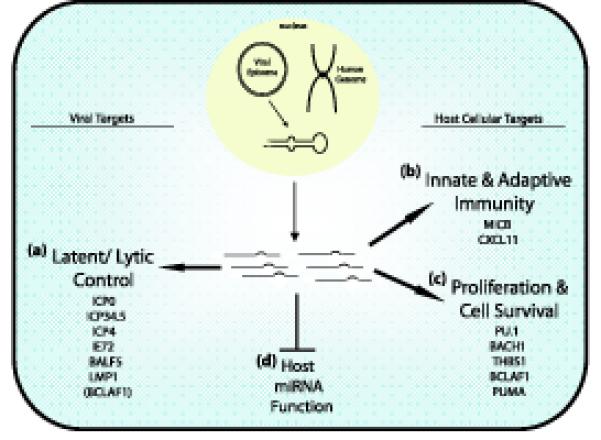Figure 3.

Themes of herpesvirus miRNA regulation. Both viral and host cellular genes are targeted. (a) One main theme is the tight control of latency by inhibition of immediate early or early genes as shown for ICP0, ICP4, ICP34.5, and IE72. Additionally, EBV LMP1 expression is fine tuned by viral miRNAs to enhance cell survival during latency. Targeting of BCLAF1, a cellular gene, contributes to latent/lytic replication by sensitizing cells to reactivation. (b) Targeting of antiviral responses (MICB and CXCL11). (c) Modulation of cellular proliferation and survival. Target genes have anti-angiogenic (THBS1), or pro-apoptotic activity (BCLAF-1, PUMA, and Bach-1). (d) Impairing host cellular miRNA function. Seed sequence-independent modes of viral miRNA function have also been suggested. One alternative model is based on de novo infection experiments with MCMV, which demonstrated that early after infection viral miRNA synthesis completely overtakes host cellular miRNA production [73]. As a consequence host miRNA function might be impaired leading to a global de-repression of the cell transcriptome. This could be due to hijacking of either Drosha/DGCR8 processing or RISC loading.
